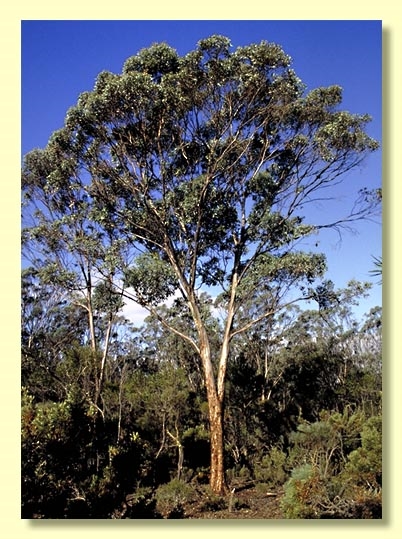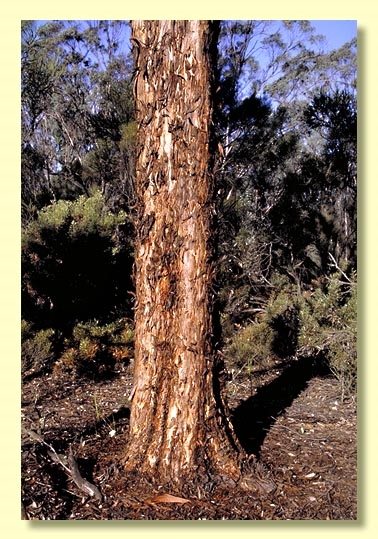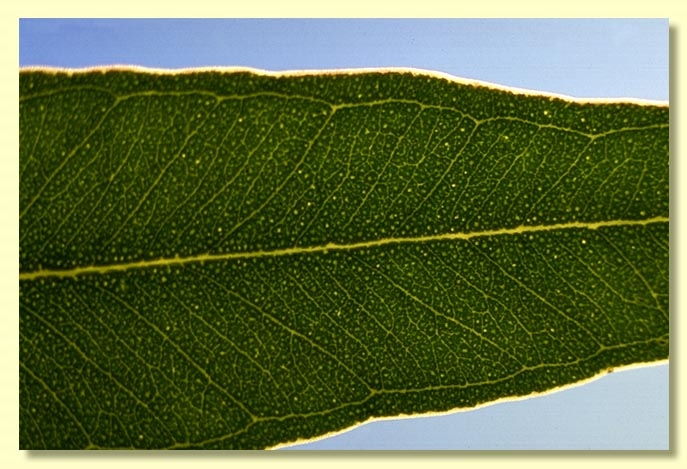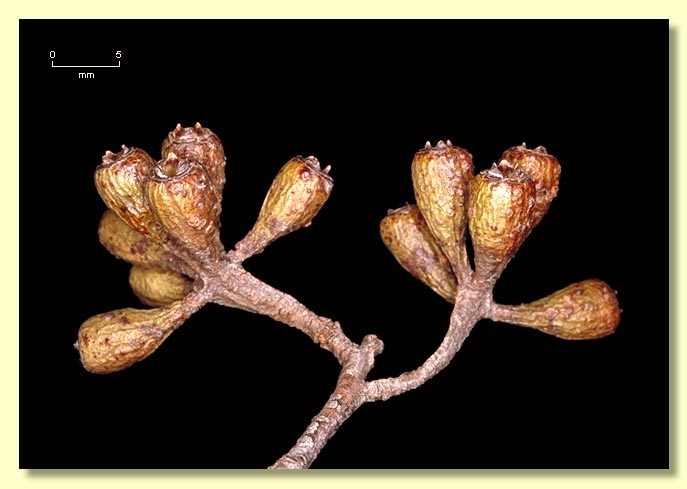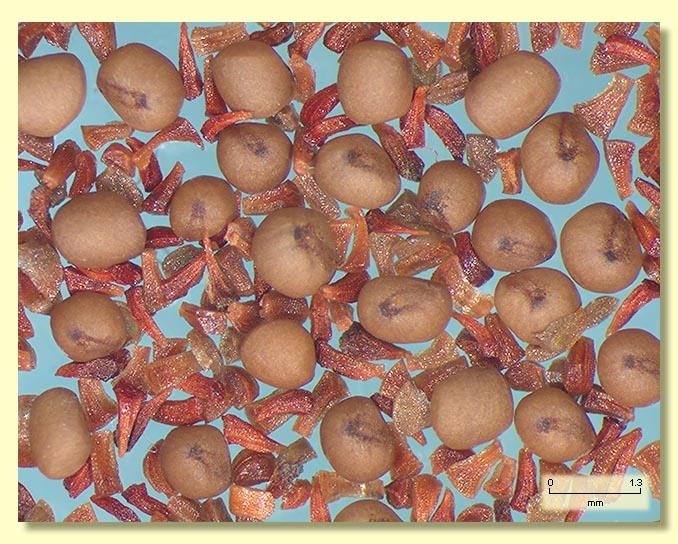Eucalyptus | Symphyomyrtus | Bisectae | Glandulosae | Levispermae | Levispermae
Euclid - Online edition
Eucalyptus gardneri subsp. gardneri
T: near Bendering, Western Australia, 6 Feb. 1922, C.A.Gardner 1239; holo: NSW.
Bark smooth throughout, shedding in short curly tan flakes often giving a scruffy appearance to the trunk, satiny grey over salmon-pink. Horizontal insect scars sometimes present on trunk.
Branchlets with few or no oil glands in pith.
Juvenile growth (coppice or field seedlings to 50 cm): not seen.
Adult leaves alternate, petioles 0.8–1.8 cm long; blade lanceolate, 5–11 cm long, 0.8–2.2 cm wide, base tapering to petiole, margin entire, concolorous, dull, blue-grey, side-veins greater than 45° to midrib, reticulation usually moderate, intramarginal vein remote from margin, oil glands irregularly shaped, island and intersectional.
Inflorescence axillary unbranched, peduncle widening apically 1–1.8 cm long, buds ?9 or 11 per umbel, pedicellate (pedicels 0.3–0.4 cm long). Mature buds long-fusiform (1.9–2.6 cm long, 0.2–0.4 cm wide), scar present, operculum horn-shaped often with a terminal curl, three to four times as long as hypanthium and equal to it in width at the join, few outer stamens erect, most stamens variably deflexed, anthers oblong, versatile, dorsifixed, dehiscing by longitudinal slits, style long and straight, stigma blunt to rounded, locules 3, the placentae each with 4 vertical rows of ovules. Flowers pale lemon.
Fruit pedicellate (pedicels 0.3–0.4 cm long), cylindrical to barrel-shaped, 0.7–1.1 cm long, 0.5–0.6 cm wide, disc descending vertically, valves 3, near rim level.
Seeds pale brown to straw-coloured, 0.8–1.7 mm long, usually sub-spherical, surface smooth, hilum ventral/terminal.
Cultivated seedlings (measured at ca node 10): cotyledons Y-shaped (bisected); stems rounded in cross-section; leaves always petiolate, sometimes shortly so, opposite for 3 to 5 nodes then alternate, lanceolate, 6.5–11 cm long, 1.3–3 cm wide, dull green.
Flowering has been recorded in July.
Eucalyptus gardneri is a mallet species endemic to Western Australia, mainly south-east of Perth from south of Williams to the Ravensthorpe Range, and also a small occurrence near Cadoux north-east of Perth; usually on lateritic ridges or slopes. The bark is smooth apart from imperfectly shed, curling, red-brown flakes. The leaves are dull, blue-grey and the whole crown is recognisable for its bluish colour.
It belongs in Eucalyptus subgenus Symphyomyrtus section Bisectae subsection Glandulosae because the cotyledons are bisected and the buds have an operculum scar and the branchlets have oil glands in the pith (though in this case usually few or sometimes none). Within this subsection E. gardneri is one of a group of species that form series Levispermae subseries Levispermae characterised by having smooth spherical seed, a peduncle that widens apically, and buds that are narrowly fusiform with some stamens erect, others variably deflexed, usually dull blue-grey to grey-green adult leaves, and few, if any, oil glands in the pith.
E. gardneri is distinguished from the closely related smooth-barked small-leaved mallet E. densa subsp. densa by having much larger lanceolate leaves (to 2.2 cm wide) and also the obvious persistent curls of bark. E. gardneri differs from the smooth-barked mallee E. pluricaulis in habit and bark features.
There are two subspecies:
E. gardneri subsp. gardneri
Found over the major part of the distribution of the species and characterised by the very long attenuate opercula.
E. gardneri subsp. ravensthorpensis
This form occurs only at the eastern end of the distribution of the species, in the Ravensthorpe Range, and is characterised by the shorter opercula and slightly fatter buds.

